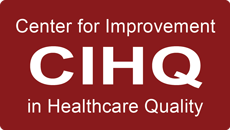Partner Spotlight

RLDatix
RLDatix is a global healthcare technology company helping organizations to provide safer care. Trusted by over 6,000 customers, we integrate and automate workflows across governance, risk, compliance (GRC), and workforce management functions to deliver critical insights that improve quality outcomes. As the only technology platform linking workforce management and GRC, our broad suite of enterprise software applications and services enable the identification of risk, enhance operational efficiency and compliance, and build a consistent, transparent culture of safety. RLDatix is committed to helping our customers inspire trust and provide a better, safer experience for clinicians, staff, and patients alike. Visit
rldatix.com to learn more.
New to the Journal! Partner Compliance Tips
March 2023 Compliance Tips of the Month
Leadership Tip of the Month – Provided by CSE Leadership
Humility is the foundation for trust!
Leaders who set aside their egos and admit to not knowing all the answers build trust and respect from their teams. Using “WE” instead of “I” and humbly giving credit to others for accomplishments are rewarded with employees who are willing to walk beside their leaders in finding the answers to improving quality and patient safety.
Life Safety Compliance Tip - Provided by Soleran
What Constitutes An Effective Work Orders System/CMMS?
Not all work orders or CMMS systems are created equal. Here's a few checklist items to consider for efficiency & compliance.
- Comprehensive asset management
- Preventive & corrective maintenance management
- Integration capabilities
- Mobile accessibility
- Reporting & analysis
- Data security
Wound care Tip - provided by WoundVision
Challenge: How can you document what you can’t see? Deep tissue pressure injury (DTPI) can take days before becoming clinically visible on the skin surface, resulting in inadequate present on admission (POA) documentation, reactive patient care, and financial implications. Not to mention, skin color change is difficult to identify in darkly pigmented skin.
Solution: Published evidence and international guidelines (NPIAP and AORN) support incorporating long-wave infrared thermography (LWIT) for skin temperature assessment into routine skin and wound assessment. Because skin temperature change often precedes skin color change in deep tissue pressure injuries, clinicians leverage LWIT to document what they can’t see and trigger interventions.
Want to learn more? Contact
WoundVision to see if their solution can help your organization.
Continuing Education Tip - Provided by Pretaa
Continuing education in the rapidly evolving fields of Substance Use Disorder (SUD) and behavioral healthcare is vital for elevating patient care and outcomes. Keeping abreast of innovations and new research through ongoing learning ensures that healthcare staff are equipped with the latest knowledge and techniques. This commitment to education not only enhances patient outcomes but also fosters a diverse and dynamic treatment environment.
There is no question that Sterile Processing plays an important role in the hospital to ensure patient safety and prevention of infection. Efficiency and organization are two keys that define the quality of that department, not only in the process and procedures practiced but in the storage of instruments and equipment.
Do you have leftover inventory from prepared surgical kits? Does the stock room contain instruments or supplies no longer used? Do you have “that corner” that collects unwanted inventory? The items you store cost money to maintain, waste valuable floor space and possibly create compliance liabilities. Clear them out to maintain high standards and practice sustainability by giving the items a second life.
We offer a no-cost solution for that excess storage. Contact
Joan Byron for more information.
How Can an EVS Partnership Bring Peace of Mind?
Staying on top of ever-changing Regulatory Compliance requirements is integral to a successful environmental services program. Administrators can be confident that all cleaning procedures are completed accurately and effectively to meet all local, state, and federal requirements.
Flexibility & Responsiveness Things can change rapidly in long-term care, so having a partner that can remain nimble and address immediate concerns can positively support healthcare leaders. Consider a partnership with a service provider with multiple management support levels that can act as additional resources to help keep facilities running smoothly and effectively supporting an environment residents want to live in, guests want to visit, and where the staff wants to grow in their careers.
Sterilization and Disinfection Tip – provided by Dr. SPD
Adherence to Standards and Guidelines:
Sterile processing professionals must adhere to industry standards and guidelines to ensure the safety and efficacy of sterilization processes. Standards, such as those set by organizations like AAMI and the Centers for Disease Control and Prevention (CDC), provide evidence-based recommendations for proper sterilization techniques, equipment maintenance, and quality control.
Safety and Compliance Tip – provided by HCE Global
In our experience, we have learned that the majority of healthcare facilities struggle with similar challenges. Regardless of the size of a facility, major deficiencies can exist and often go undetected. Here are a few tips to help keep your organization safe and compliant.
Performing Regular Audits and Assessments - Conduct regular internal audits and assessments to identify areas of non-compliance and address them promptly. Good practices include routine review of policies and procedures, conducting risk assessments and monitoring adherence to current healthcare regulatory standards.
Training and Education – Don’t get caught playing catch up! Education for all employees should begin with onboarding. Review new employee orientation programs to ensure that you are fully preparing your team members to perform their job successfully. Be sure to provide comprehensive education on pertinent regulations, policies, and procedures. Training on privacy and security protocols should not be overlooked and is imperative in the healthcare industry.
Ongoing annual training is also critical. Be sure to implement a system that tracks when educational training is provided, competency is met, and when annual training is due.









